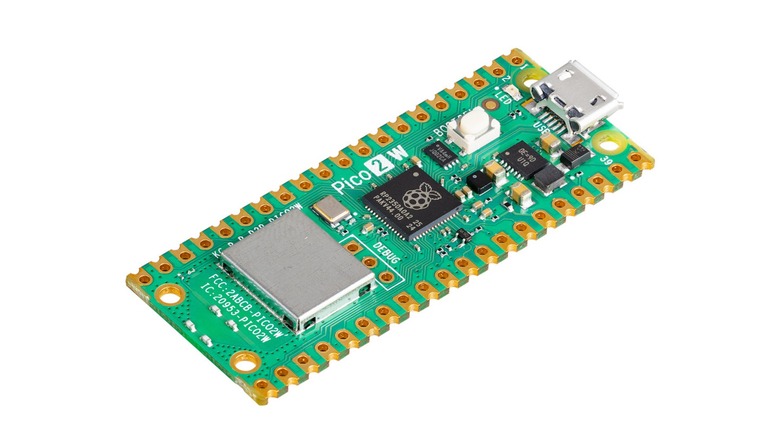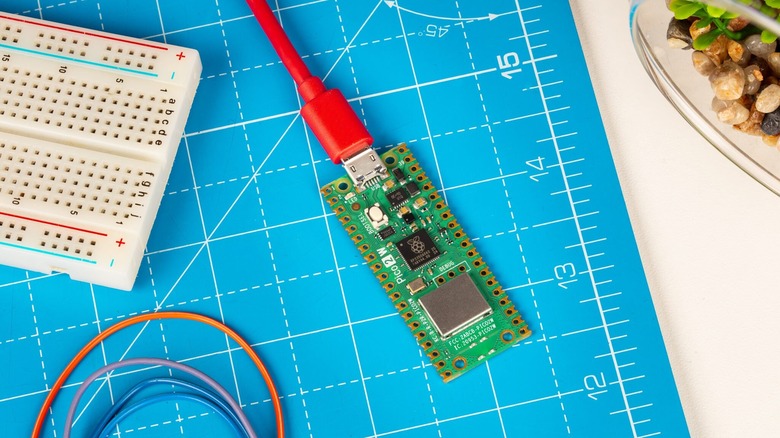Everything You Need To Know About The $7 Raspberry Pi Pico 2 W
The Raspberry Pi series of inexpensive single-board computers (or SBCs) built around an ARM system on a chip have greatly changed the landscape of do it yourself computing projects in the past 15 years. The germ of the idea came in 2006, when a group of employees at the University of Cambridge's Computer Laboratory who were concerned by a year-over-year decline in the number of computer science students and the skill level of those students who did enroll. Learning how to code had been part and parcel of the 1980s computer-owning experience, but in the 1990s and beyond, it became a less necessary skill. Introducing incredibly inexpensive computers designed for DIY projects that would encourage younger computer enthusiasts to learn programming languages was thus the catalyst for launching the Raspberry Pi organization and product line.
The Raspberry Pi line is divided into four series of boards. Those are the flagship Pi with the most horsepower and connectivity options, the Zero series with a smaller form factor and fewer ports with lower specs, the Compute Module series for embedded applications, and the Pico series, which are very small microcontroller boards that don't run Linux or have removable storage, instead being programmed by flashing a binary onto the built-in flash storage. They're best for single-purpose uses, like controlling other devices.
The Pico series has a new update, the $7 Raspberry Pi Pico 2 W. Let's take a look at what this board brings to the table with its feature set.
What does $7 get you?
What sets the Raspberry Pi Pico series apart from its cousins like the Raspberry Pi Zero series is that instead of being a cut-down version of the flagship Raspberry Pi, it's supposed to be a low-cost alternative to older Arduino boards. If you're new to Arduino boards, they're much more straightforward than Raspberry Pi boards, without the need to load an operating system onto it or worry about a user interface. Instead, you write your code in the Arduino software on your primary computer and flash it to the board. The Pico series works the same way. If you're looking at comparing the Raspberry Pi Pico to Arduino boards, though they're broadly similar, they use different programming languages and have different pinouts.
Spec-wise, the Pico 2 W boasts dual Arm Cortex-M33 or dual Hazard3 RISC-V processor running at 150MHz, 520KB of on-chip SRAM, newly included 2.4GHz 802.11n Wi-Fi with support for Bluetooth 5.2, plus various security features with full documentation. As of this writing, there's just one professional review of the Pico 2 W available online, from Les Pounder at Tom's Hardware. That review is very positive, giving the board 4.5 stars out of five and noting that the addition of Wi-Fi was the big game changer. The review also praises the new model for coming with an increase in power while keeping the price low. If you don't need Wi-Fi, the regular Pico 2 is fine, but this is the one for your "internet of things" projects.

